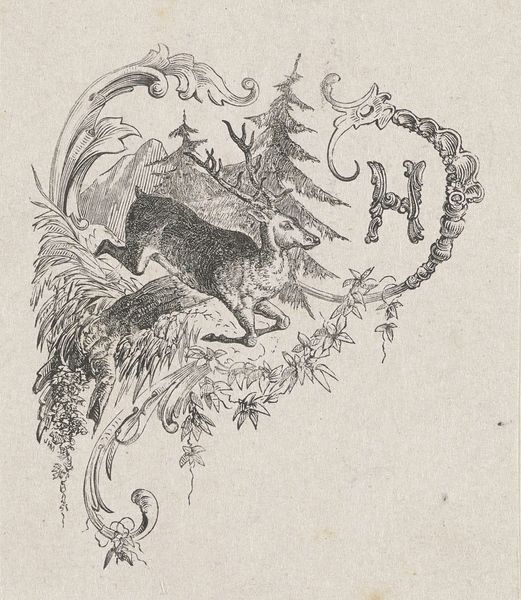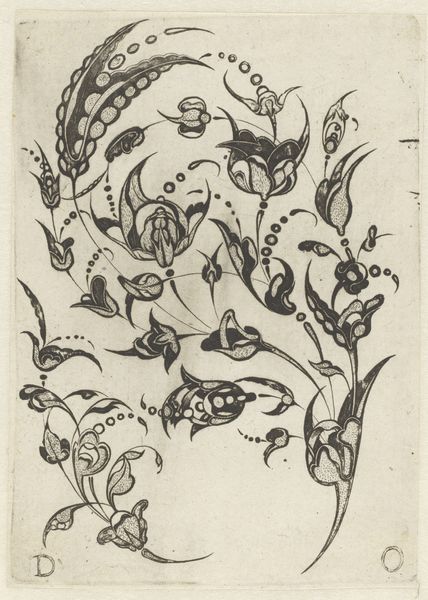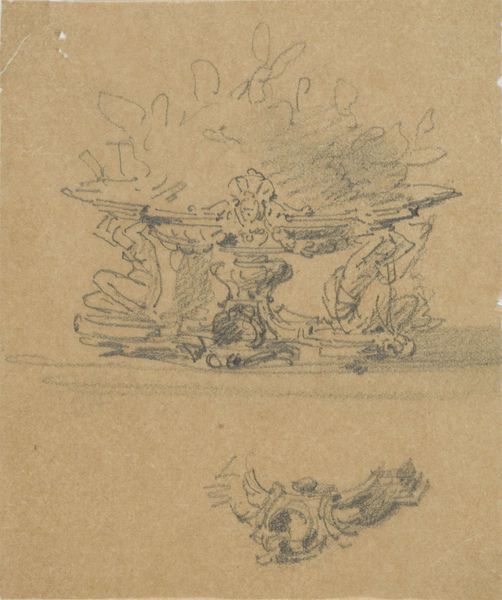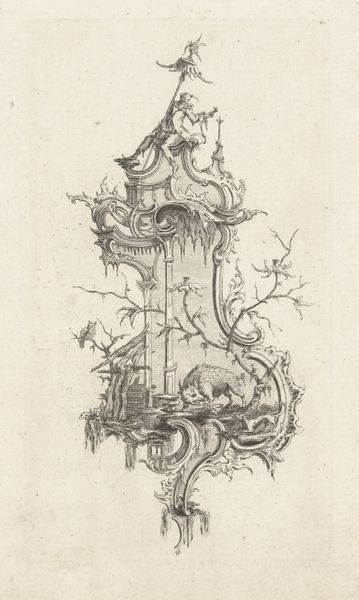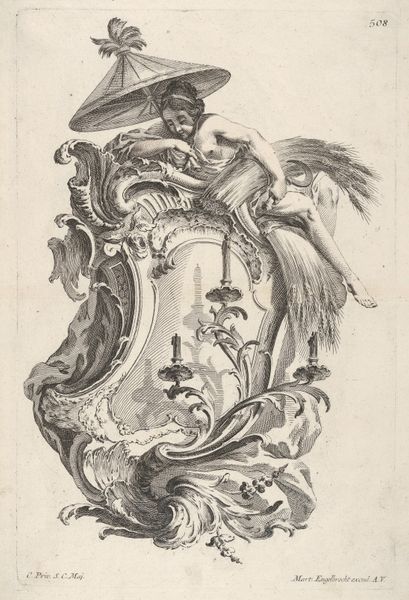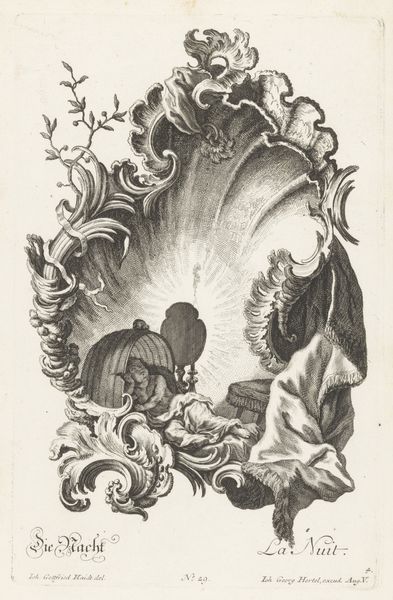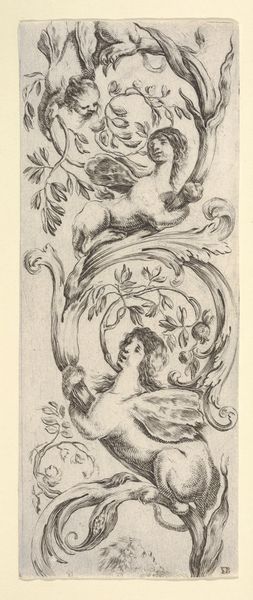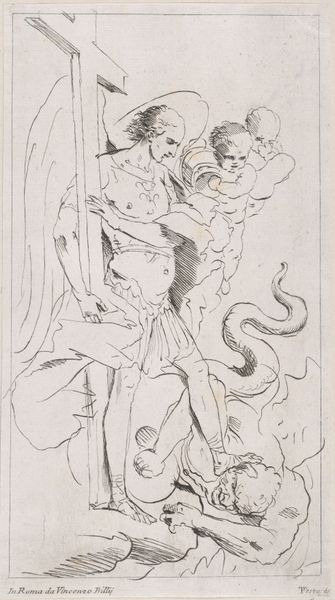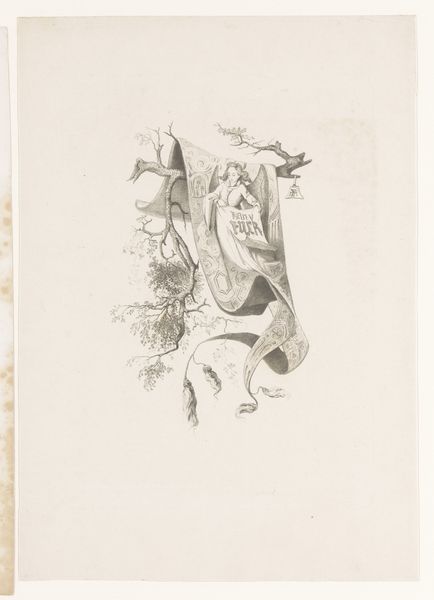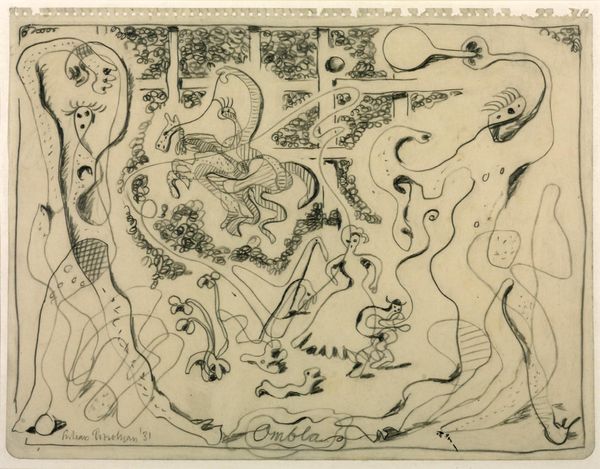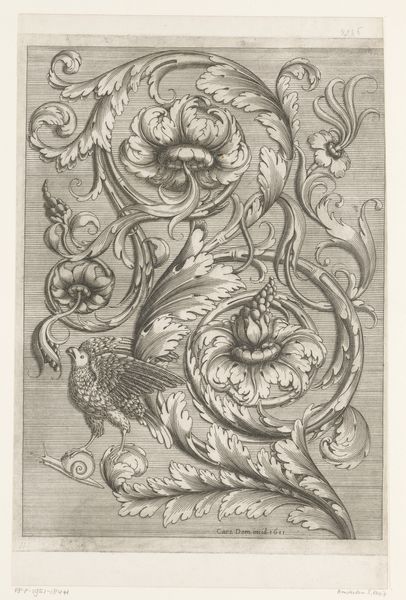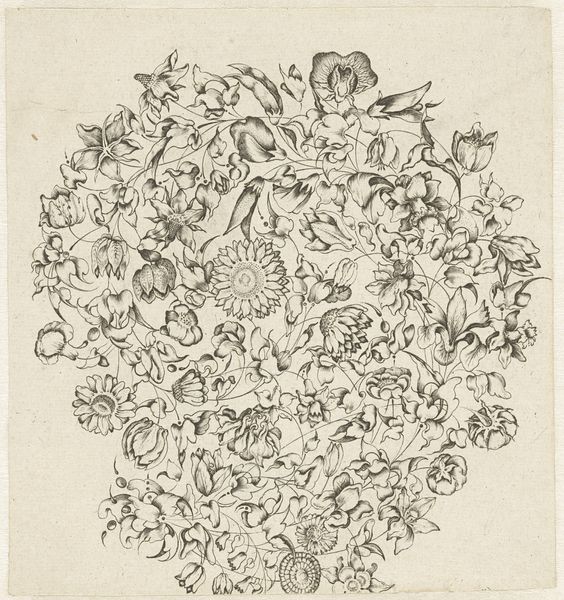
Geornamenteerde letter C met een allegorische vrouwfiguur 1836 - 1912
0:00
0:00
Dimensions: height 102 mm, width 77 mm
Copyright: Rijks Museum: Open Domain
Editor: This ink drawing, "Geornamenteerde letter C met een allegorische vrouwfiguur," dating from 1836 to 1912 and attributed to Isaac Weissenbruch, feels so airy and elegant. The figure seems to dance out of the initial. How should we interpret this work? Curator: The piece speaks to the construction of idealized femininity prevalent in 19th-century art, but perhaps also gestures at challenging those ideals. How does the woman’s allegorical presence within a decorative letter “C” both confine and empower her, and what cultural narratives is Weissenbruch engaging with? Editor: Confine and empower… that’s interesting! It seems paradoxical, almost like she’s trapped within the constraints of the letter, but her posture is very dynamic and free. Do you see any feminist readings here? Curator: Absolutely. Look at the romanticised aesthetic, then consider women's societal roles during that period. We might read her ornamentation not simply as beauty, but as societal expectation. The line between aesthetic appreciation and social critique becomes deliberately blurred. Is Weissenbruch commenting on these restrictions or simply upholding them? Editor: That’s something I hadn’t considered. The detail seems like pure decoration, but your comments change how I perceive her agency, or lack thereof. Thank you. Curator: These dialogues are crucial, and reveal just how art history intertwines with issues of identity and politics. We are only beginning to unravel its complexities.
Comments
No comments
Be the first to comment and join the conversation on the ultimate creative platform.
